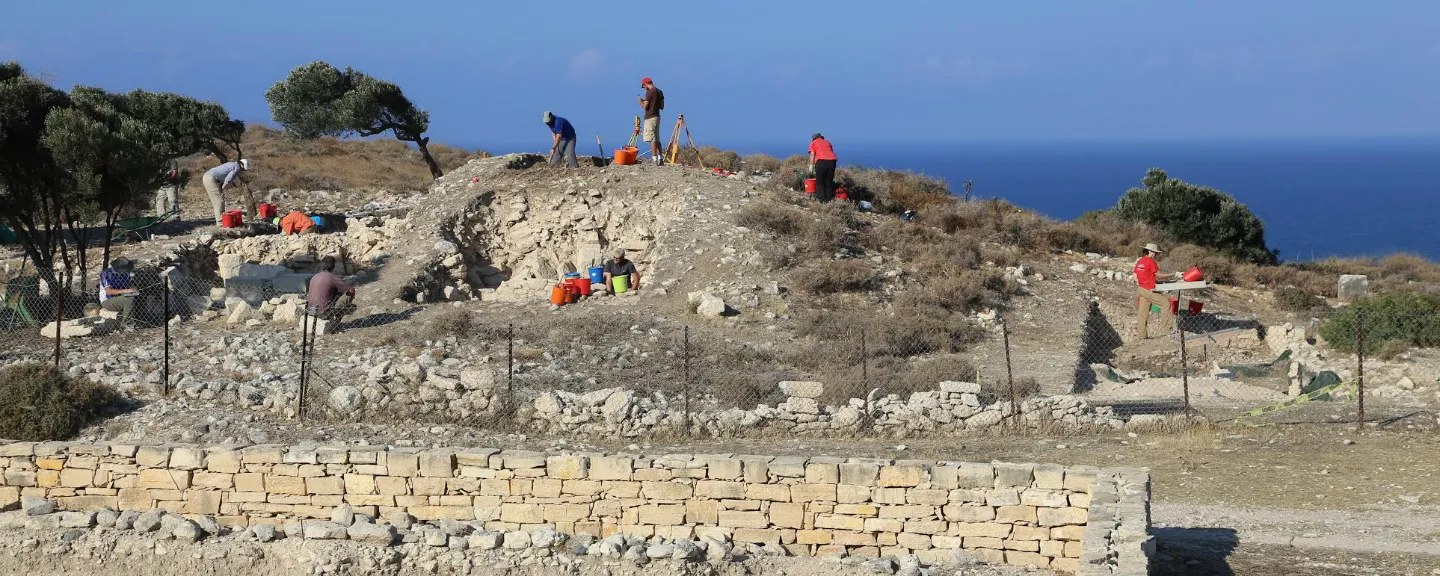- Home
- >
- APU Articles
- >
- News Article
Unearthing Biblical History for the Classroom
November 04, 2019 | Written By Lucas Grimsley, PhD (ABD)

As an archaeologist and professor of New Testament I aim to understand the context and development of early Christianity. While working on Cyprus I've visited and studied the places where Paul and Barnabus shared the gospel message (Acts 13) and influenced the growth of Christianity in the church of Antioch (Acts13). To help bring the biblical text to life for my students, I introduce archaeology into the classroom. The connection of places, names, and artifacts with Scripture enables students to gain a broader understanding of the history and culture of the Bible while deepening their faith.
Cyprus has a long history of Christianity beginning in the 1st century AD. The book of Acts records that Cypriots were influential in the growth of Christianity in the church of Antioch (Acts 11). Paul and Barnabas traveled to Cyprus to share the gospel message throughout the whole island (Acts 13). This mission would have sent them through the city of Kourion on their way to the capital city of Paphos, where Paul had his first successful conversion of a gentile, the Roman proconsul Sergius Paulus. As a native Cypriot, Barnabas returned to Cyprus and continued the spread of Christianity (Acts 15:39) until his martyrdom and burial on the island. The orthodox church of Cyprus is recognized as receiving an apostolic foundation due to the work of Barnabas and Paul.
In the early 4th century AD Kourion was a vibrant Greco-Roman city containing a civic center, bathhouse, theater, stadium and a large pagan religious complex dedicated to the deity Apollo Hylates but had no public church buildings. By the mid-4th century AD this site along with others on Cyprus were rocked by a series of earthquakes that destroyed many of the urban sites and their buildings. Included in this destruction was the pagan temple of Apollo. During the rebuilding of Kourion the inhabitants did not repair or rebuild Apollo’s temple, instead they began to build churches.
Many of the domestic structures at Kourion destroyed in the earthquakes were left untouched, providing archaeologists a window to this moment in time. Currently our project is excavating one of these well-preserved structures. This building is a large two-story upper-class home that experienced a quick and catastrophic destruction by earthquake causing it to collapse in on itself preserving many of the artifacts of the home. Within this building our excavation has uncovered numerous coins, a glass plate imported from Egypt, sculpture fragments, painted plaster, marble wall facing in which one panel is still attached to the wall, mosaic floors, and numerous ceramic vessels. Along with these finds the skeletal remains of four individuals who were trapped and crushed by falling boulders from the earthquakes were found huddled together in one of the rooms.
Our project will return to the field next summer to continue the excavation of this building. As we unravel the circumstances surround the destruction of this home, we hope our findings will add to our understanding of Christianity’s past on Cyprus and I look forward to sharing these important discoveries with my students.